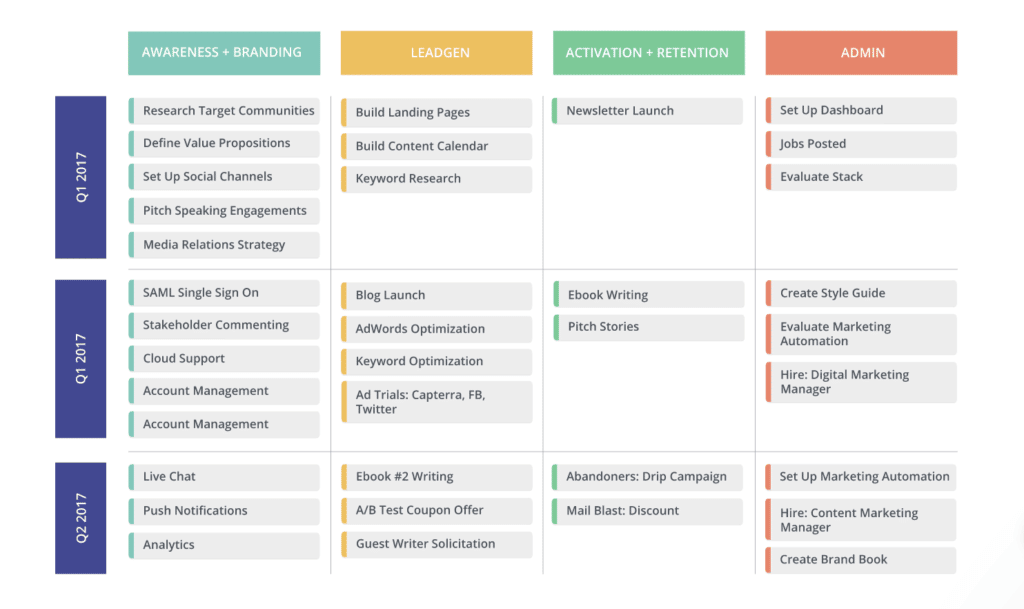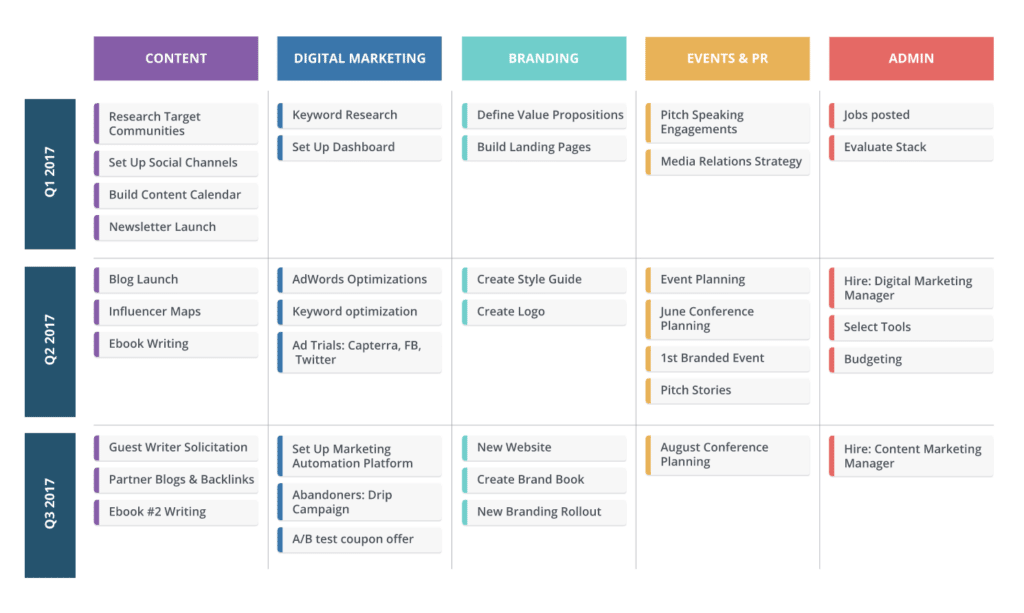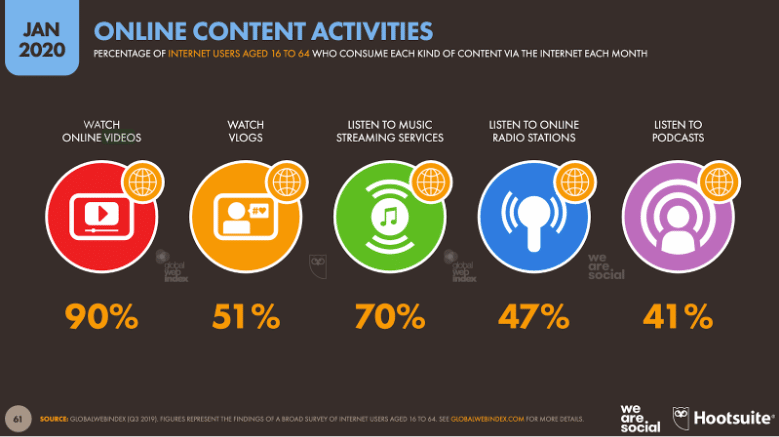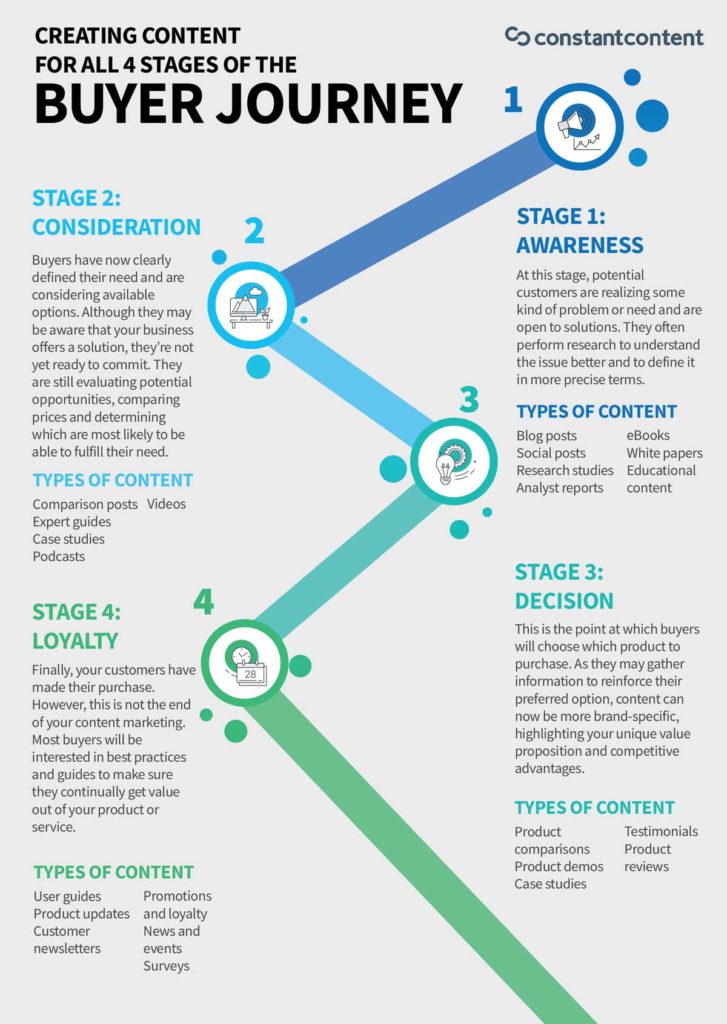Marketing is all about wayfinding: you have a product (your starting point), you need to deliver it to your customers (your destination), and your marketing serves as the navigational guide to reach them.
Granted, many of us have been known to take the scenic route when it comes to growing a business, but ultimately, successful marketing relies on focus. The path to your destination is rarely a straight line, and there are often roadblocks and detours along the way that force you to change course. And as your marketing grows in size and scope, having a reliable strategy to reach your audience becomes increasingly important.
I covered several best practices in my previous marketing strategy guides, which you can read here and here, and now it’s time to build on those steps to make your strategy even more impactful.
Building Themes into Your Journey
Going back to my earlier statement that successful marketing requires focus, many marketers take a themed approach to content development that allows them to dial in on specific topics. Yes, I know there are TONS of things you could talk about, but just like using a roadmap, you can only follow one road at a time.
Roadmunk, for example, is a highly valuable tool that can help you break your content marketing into quarterly themes for a bird’s eye view of your journey. Their tool is especially helpful if you’re pitching your ideas to people who may not be as savvy on content marketing as you are: it’s easy to read and everyone can see their role, assignments, and overall goals.

For theme-based marketing, you’ll choose a specific theme for each quarter (or month, but in my experience doing it by month can be too time constricting), then break out unique topics for each theme. From there, you can decide the best content format (e.g. blog post, infographic, e-book, etc.) for each topic and the best channel to promote each piece of content (e.g. social media, email marketing, landing page, etc.)

Adapting Content for Specific Channels
Once you develop content, you’ve got no shortage of options to help you promote it. Social media offers plenty of opportunities to share your content, along with your own website, landing pages, blogs, and even guest blogs.
However, it’s not enough to create one message and share it across every channel. What works on Twitter might not work on Facebook because audiences are different, and so is the creative flexibility in your messaging. If you want to maximize engagement, you’ll need to tailor your content and messaging to each channel.

Think of it as choosing whether to fly, drive, or take a bus to your destination — you’ll eventually end up in the right place, but the method of transport will have a lot to do with how long it takes, how much it costs, and how many setbacks you experience along the way.
Let’s look at some best practices to consider:
- Facebook: This is the most popular network, which also means you’ll face the most competition. Users want to be entertained and inspired, so standing out is a must. As a bonus, you have more creative freedom with text length. You also have paid advertising opportunities.
- Twitter: Tweets are short and to the point, with a max of 280 characters. This network is usually used to learn of new or noteworthy events and info.
- Instagram: Instagram is heavy on visuals and hashtags. Your copy should be short and supportive of your imagery. You should also find relevant hashtags to make your content more visible.
- LinkedIn: The professional’s network, LinkedIn focuses mostly on business-related topics and image-building. You can use LinkedIn’s built-in blogging platform or share your own content.
- Your Blog: This is your biggest branding opportunity because you own this asset. You can post and share blog content to drive traffic back to your website.
- Guest Blog: When writing for someone else’s blog, you must adapt your content and voice to match the other content on their site. Also, you’re writing for their audience in mind, not your own, so it’s important not to be overly personal or promotional.
- Landing Page: Landing pages are promotional in nature and focus on a specific goal or action. My recent blog post shares more details about what to include on a landing page.
- Email Newsletter: Emails are highly personal and should build your brand and encourage action from your user. Use resources like GetResponse or AWeber to help you with your email marketing.
You can still promote the same piece of content across multiple channels, as long as you tailor your engagement efforts.
Creating Content for Each Stage of the Sales Funnel
As you’re exploring different themes and channels for your content, it’s essential to align these elements with the various stages in the buyer’s journey. Briefly, these stages include:
Awareness Stage
Buyers who are unfamiliar with your brand or may not be fully aware of a problem are in the Awareness Stage. At this point, it’s your goal to introduce your brand in a friendly, non-promotional way and highlight problems that your user may be experiencing. This can be accomplished in a number of ways, including blog posts, social media posts, research and reports, white papers, and educational content.
Consideration Stage
During the Consideration Stage, buyers are more aware of your brand and the problems they’re having, and are considering solutions for those problems (though they may not be ready to commit). Content in this stage could include demo videos, case studies, expert guides, and in-depth product reviews.
Decision-Making Stage
Customers who move through your sales funnel into the Decision Stage are those who are ready to act on a solution. They’ve done their research and have gotten to know your brand, so content at this stage should be geared toward completing the purchase. Types of content could include customer testimonials, a free trial, landing page, case studies, and product comparisons.
Aligning themes, channels, and content with your overall business objectives can help you avoid as many detours as possible on your marketing roadmap.






